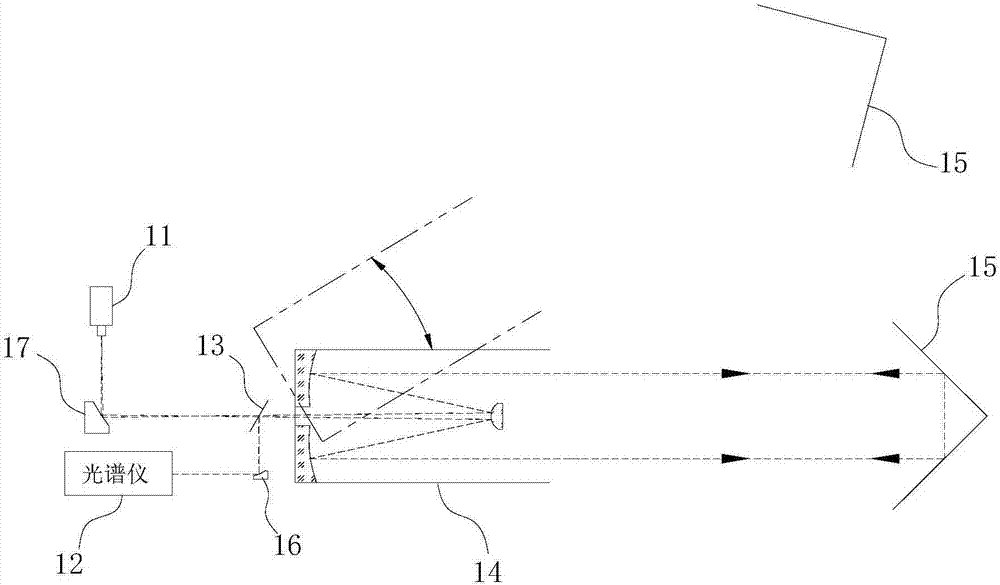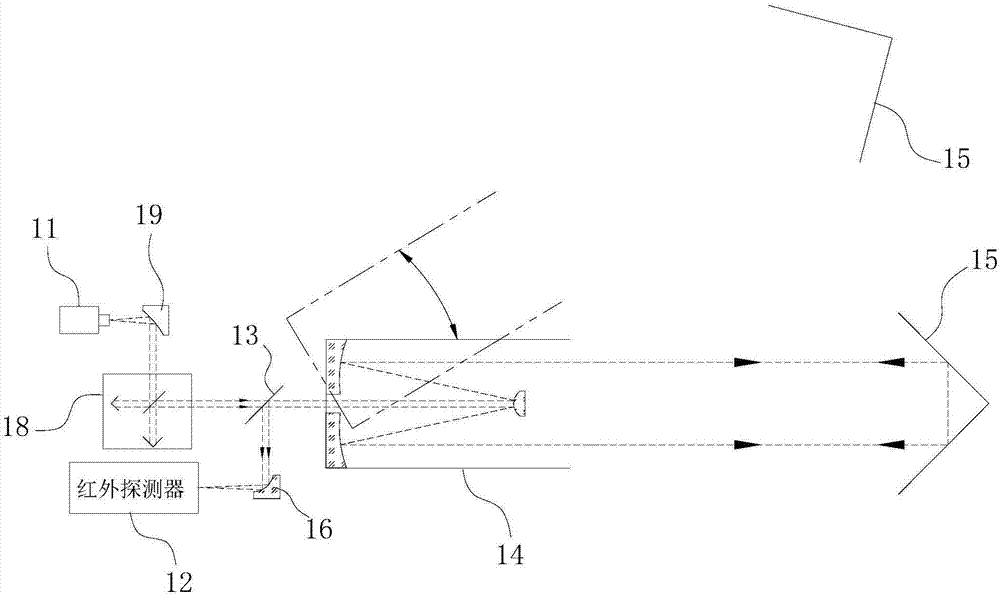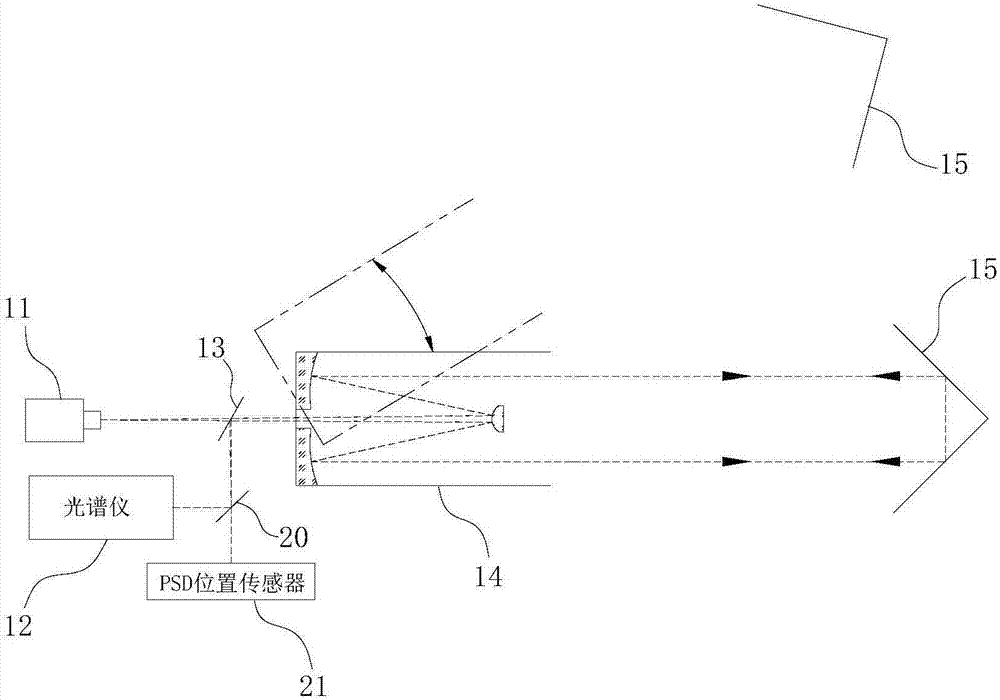Receiving and transmitting integrated open light path atmospheric detection system
An open optical path, atmospheric detection technology, applied in measurement devices, material analysis through optical means, instruments, etc., can solve the problems of inability to detect, large optical path span, time-consuming and labor-intensive, etc., to shorten the distance, reduce the difficulty, and detect data. reliable results
- Summary
- Abstract
- Description
- Claims
- Application Information
AI Technical Summary
Problems solved by technology
Method used
Image
Examples
Embodiment 1
[0030] Such as figure 1 As shown, the infrared signal transmitting unit includes an infrared light source 11 and an ellipsoidal mirror 17, and the scattered light emitted by the infrared light source 11 is reflected by the ellipsoidal mirror 17 and then passes through the first beam splitter 13 and enters the Karl's telescope 14, and the Karl's telescope 14 expand the scattered light beam into collimated parallel light, the parallel light shoots to the reflection unit 15, the reflection unit 15 is composed of a corner mirror, and the parallel light returns to the Karl’s telescope 14 according to the original path after being reflected by the reflection unit 15, and passes through the Karl’s telescope 14. The telescope 14 is focused and projected on the first beam splitter 13, then reflected by the first parabolic mirror 16 into parallel light and enters the infrared signal receiving unit 12 after being reflected by the first beam splitter 13, and the infrared signal receiving u...
Embodiment 2
[0032] Such as figure 2As shown, the infrared signal transmitting unit comprises an infrared light source 11, a second parabolic mirror 19 and an interferometer 18, and the scattered light emitted by the infrared light source 11 is reflected into parallel light by the second parabolic mirror 19, and enters the interferometer 18 to generate an interference signal, and the interference The signal is emitted from the interferometer 18 and passes through the first beam splitter 13 and enters the Karl Fischer telescope 14. The interference signal is expanded by the Karl Fischer telescope 14 and then directed to the reflection unit 15. The reflection unit 15 is also composed of a corner mirror, and the interference signal After being reflected by the reflection unit 15, it returns to the Karl’s telescope 14 according to the original path, is projected on the first beam splitter 13 after being focused by the Karl’s telescope 14, and then reflected by the first beam splitter 13 and th...
Embodiment 3
[0034] Such as image 3 As shown, the infrared signal transmitting unit includes an infrared light source 11, and the scattered light emitted by the infrared light source 11 directly passes through the first beam splitter 13 and enters the Karl Fischer telescope 14, and the beam expands through the Karl Fischer telescope 14 to be collimated parallel light. The light is projected on the reflection unit 15, and the reflection unit 15 is a corner mirror. After the parallel light is reflected by the reflection unit 15, it returns to the Karl’s telescope 14, and after being focused by the Karl’s telescope 14, it is projected on the first beam splitter 13, and then Projected on the second beam splitter 20 after being reflected by the first reflector, one of the two light beams split by the second beam splitter 20 enters the infrared signal receiving unit 12, and the other enters the PSD position sensor 21, and the infrared signal receiving unit 12 for the spectrometer. In this embo...
PUM
 Login to View More
Login to View More Abstract
Description
Claims
Application Information
 Login to View More
Login to View More - R&D
- Intellectual Property
- Life Sciences
- Materials
- Tech Scout
- Unparalleled Data Quality
- Higher Quality Content
- 60% Fewer Hallucinations
Browse by: Latest US Patents, China's latest patents, Technical Efficacy Thesaurus, Application Domain, Technology Topic, Popular Technical Reports.
© 2025 PatSnap. All rights reserved.Legal|Privacy policy|Modern Slavery Act Transparency Statement|Sitemap|About US| Contact US: help@patsnap.com



